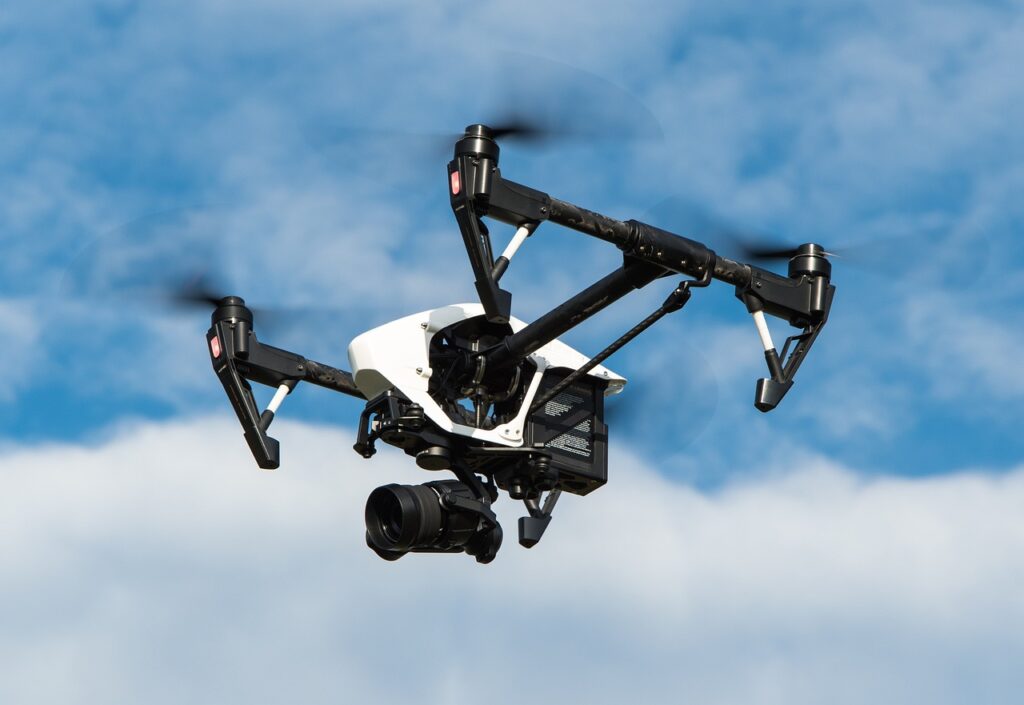Drones have soared into our lives, quite literally, offering breathtaking views and assisting in numerous tasks, from capturing stunning aerial photos to aiding search and rescue missions. Yet, as drones become more prevalent, concerns about their security and the possibility of hacking have emerged. In this article, we will delve into the world of drones and explore whether they can indeed be hacked.

Understanding Drones
Drones, formally known as Unmanned Aerial Vehicles (UAVs), come in various shapes and sizes, ranging from small quadcopters used for recreational purposes to more complex UAVs with specialized functions. They’re equipped with cameras, sensors, and GPS technology, making them versatile and adaptable for various tasks. Here are some common uses of drones:
-
Aerial Photography and Videography: Drones are popular tools for capturing stunning aerial photos and videos, which are widely used in industries like filmmaking, real estate, and landscape surveying.
-
Recreational Flying: Many individuals enjoy flying drones as a hobby, often mounting cameras to capture personal adventures from the sky.
-
Commercial and Industrial Applications: Drones are employed in agriculture, construction, infrastructure inspection, and even disaster response for tasks like monitoring crop health or assisting in search and rescue missions.
-
Military and Defense: UAVs are also used by the military for reconnaissance, surveillance, and sometimes combat operations.
The Security of Drones
Drones, like any technology, have their own security concerns. Various aspects of drone security include:
-
Unauthorized Access: Protecting drones from unauthorized access is essential to ensure that only authorized individuals can control and operate them.
-
Data Privacy: Drones often capture images and videos, raising concerns about privacy and data protection, especially when they fly over populated areas.
-
GPS Spoofing: Hackers may attempt to manipulate a drone’s GPS signals to take control of the device or divert it from its intended flight path.
-
Encryption: Securing the communication between the drone and the operator’s remote control is vital to prevent interception by malicious actors.
Is Hacking a Drone Possible?
The possibility of hacking a drone depends on various factors, including the type of drone, its security features, and the hacker’s expertise. While hacking a drone is theoretically possible, it’s essential to distinguish between different scenarios:
-
Consumer Drones: Hacking a consumer-grade drone, often used for recreational purposes or amateur photography, is relatively challenging. Most drone manufacturers implement security features, making them relatively resistant to hacking attempts.
-
Commercial and Industrial Drones: Drones used for professional purposes are typically equipped with more robust security features. Hacking these drones would require a higher level of expertise and motivation, making it less likely.
-
Military Drones: Military drones are heavily secured and closely monitored by defense agencies. Hacking into military drone systems is a significant criminal offense and is generally considered extremely difficult.
Potential Risks of Hacking a Drone
While the risk of hacking a drone is relatively low, it’s important to be aware of potential risks associated with drone hacking:
-
Unauthorized Control: If a hacker successfully takes control of a drone, they might use it for malicious purposes, potentially causing harm or engaging in activities that breach privacy or security.
-
Data Theft: Drones often capture sensitive information, such as images and videos. A hacker might gain access to and steal this data for various purposes.
-
Interference with Operations: Hackers may disrupt a drone’s normal operations, causing it to crash or malfunction, which can have serious consequences, especially in situations like search and rescue missions.
How to Protect Drones from Hacking
To minimize the risk of drone hacking, there are several steps drone operators can take:
-
Firmware and Software Updates: Regularly update your drone’s firmware and software. Manufacturers release updates to address security vulnerabilities and improve performance.
-
Secure Your Remote Control: Protect your remote control device with a strong, unique password to prevent unauthorized access.
-
Use Encryption: If available, use encryption features to secure the communication between your remote control and the drone.
-
Monitor for Suspicious Activity: Pay attention to your drone’s behavior and be alert to any unusual signals or interference that may indicate hacking attempts.
-
Respect Privacy Laws: When using a drone, be aware of privacy laws and regulations regarding the capture and use of data, especially when flying over populated areas.
Conclusion
Although it is theoretically possible to hack a drone, the risk of hacking varies depending on the type of drone, its security features, and the expertise of the attacker. For most consumer and professional drones, the risk of hacking is relatively low. Drone manufacturers continually work to enhance security measures, making it challenging for malicious actors to compromise these devices.
As drones continue to play an essential role in various industries, it’s crucial to stay informed about security best practices and use these devices responsibly, always respecting the privacy and safety of individuals and organizations. Hacking a drone may be a possibility in theory, but with the right precautions, drone enthusiasts and professionals can continue to enjoy the benefits of this exciting technology without undue worry.